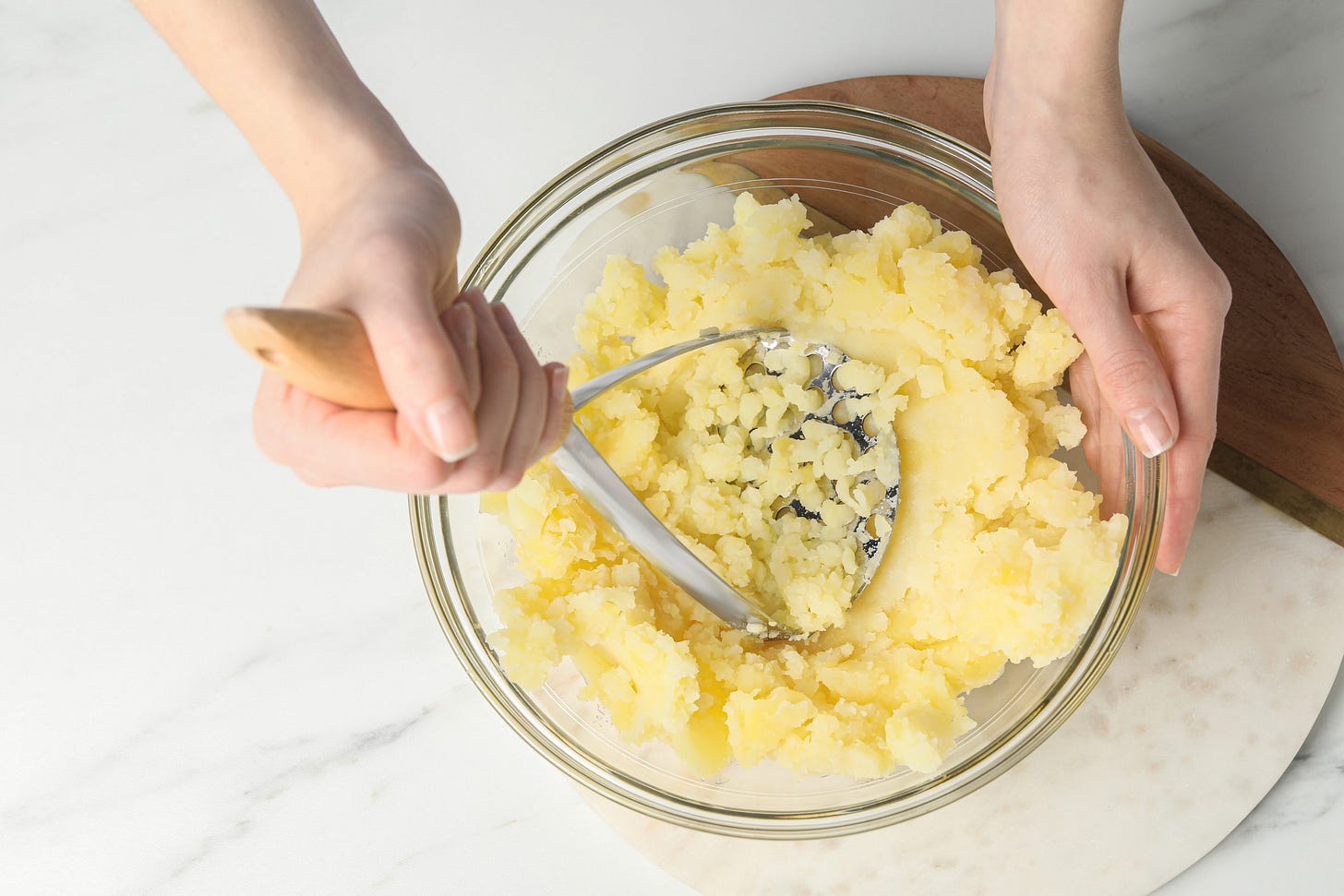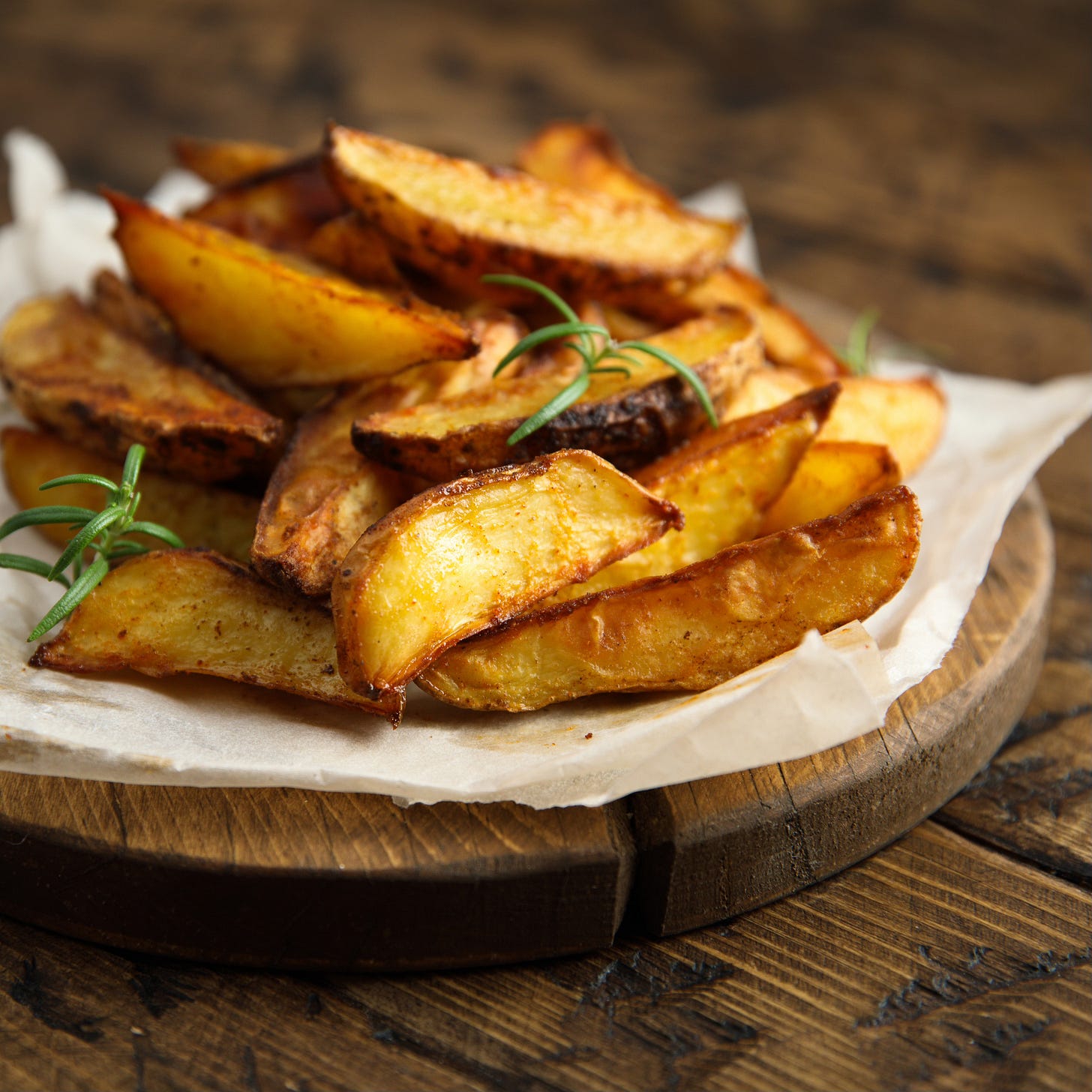One Flavor, Six Paths: Potato
From silky purée to roasted bite, discover six developmentally aligned ways to help your child build confidence through familiar texture.
Flavor confidence doesn’t always start with a bold taste – sometimes it begins with a familiar texture.
Texture exploration begins with familiar foods.
Taste literacy is a step-by-step approach that guides your child to feel confident with new foods. It is about scaffolding your child’s food confidence with flavor and texture, one step at a time. Taste literacy is not about recipes, one more bite struggles, or your child’s age or intake. It is about intentionally guiding your child’s internal map of smells, textures, and flavors forward.
Potatoes may feel too ordinary to matter. After all, your child probably already eats them in one form or another. But that is exactly why potato is so powerful for palate-building. It is familiar, safe, and endlessly adaptable. Silky when puréed. Softly yielding when mashed. Firm and aromatic when roasted. For a child still mapping textures and tastes, those shifts invite curiosity rather than hesitation.
You might think, “Potato doesn’t count; they already accept that.” But when potato is offered intentionally in a range of forms, it becomes much more than a comfort food. It becomes a training ground for resilience. Each new preparation gently guides your child to notice that foods can look, feel, and taste different – and still feel safe and familiar. That lesson will carry forward when the flavors get bolder.
Why This Flavor Matters
So why focus on potato? Because familiarity can be one of the most powerful guides in early flavor learning.
Invites calm exploration through texture. Potato’s soft, neutral nature creates a trusted starting point. From purée to mash to roasted bite, each form offers a gentle way for your child to explore change while staying anchored in comfort.
Supports sensory flexibility. When potato changes shape but remains recognizable, it quietly reassures your child that difference can feel safe. Those small variations keep curiosity alive and strengthen your child’s willingness to stay open to new sensations.
Welcomes gentle aromatics. Potato’s mild flavor makes space for leek, chive, or soft herbs to enter without overwhelm, guiding the palate toward more complex flavors in a calm, familiar way.
Before we dive into the six paths, let’s notice why potato makes such a steady anchor and how to use your child’s level of flavor confidence to decide where to begin.
Pediatric Culinary Medicine Insight
From a pediatric culinary medicine perspective, potato is far more than comfort food – it is a calm guide for sensory readiness and texture exploration.
Scaffolds sensory flexibility. Each texture shift – from silky purée to fork mash to soft roasted cube – invites your child’s mouth and brain to adapt with ease. This gentle progression lays the groundwork for a more confident palate over time.
Creates space for flavor layering. Potato’s neutral base acts as a soft canvas for gentle aromatics. A swirl of leek or a trace of parsley offers early sensory cues your child can later connect to more complex flavors without overwhelm.
Supports neuro-flavor mapping. Every calm encounter with a slightly new form of potato strengthens your child’s internal “library” of familiar tastes and textures. These repeated, low-pressure exposures help new foods feel approachable and safe.
So while potato may appear simple on the plate, it quietly guides flexibility – helping your child stay curious and calm as they meet new flavors ahead.
Each form – purée, mash, or roast – invites calm curiosity in its own way.
Levels of Flavor Confidence
Every child’s journey with taste is different. It is not about age; it is about confidence. Some children are just starting to notice new flavors, others are cautiously trying, and some are ready to jump into bold tastes.
To guide your child’s taste literacy, we developed three “levels” of flavor literacy for the week’s highlighted food. These levels are not milestones to check off. They are guides to help you notice where your child is right now and how to guide them forward without frustration.



